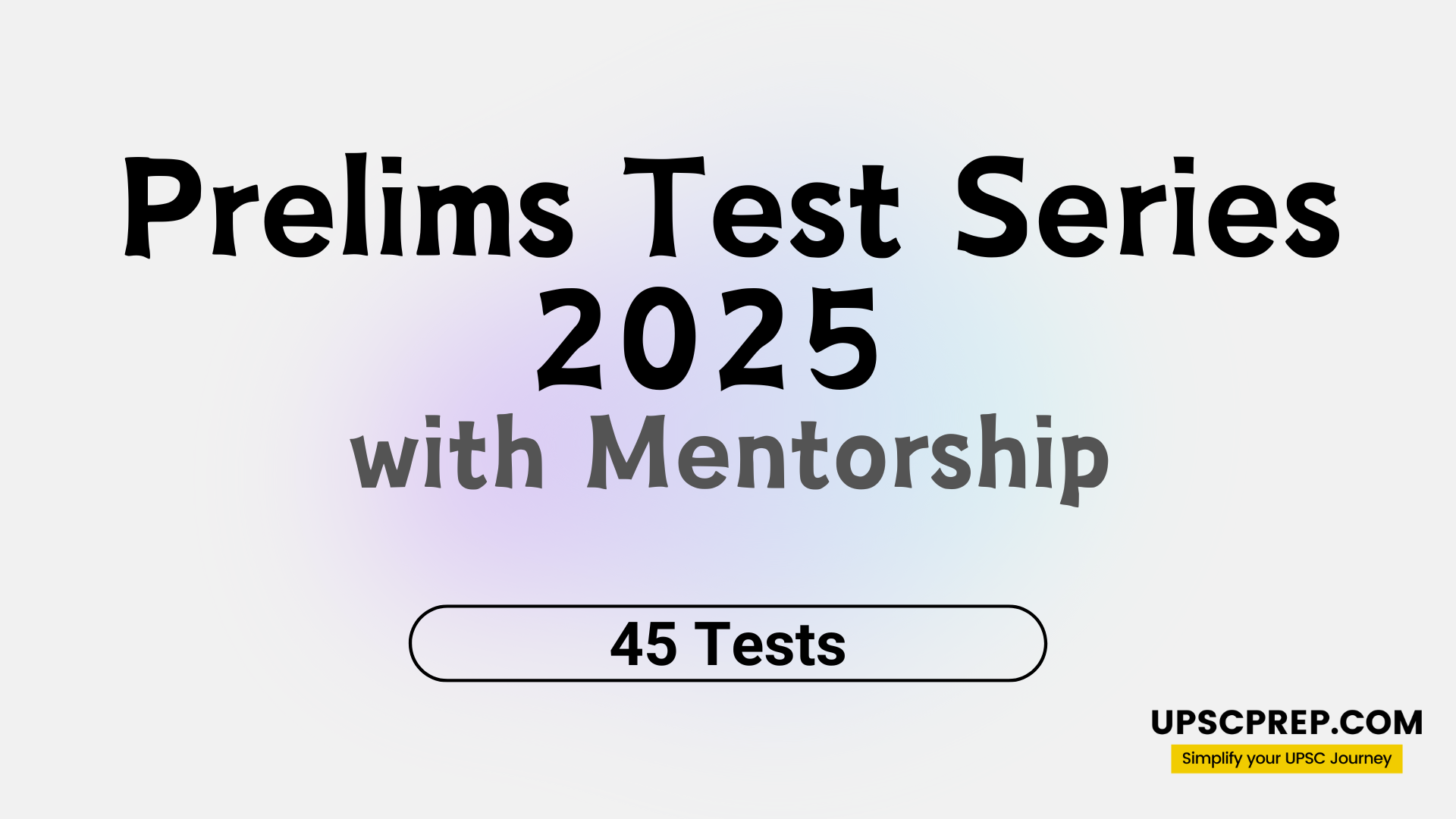Subject: GS 3
Syllabus: Indian Economy and Agriculture
Questions
- Discuss the role of e-technology in empowering the farmers in India.
(150 Words, 10 Marks) - What is the proposed Central Bank Digital Currency (CBDC)? According to you, what are the potential benefits and drawbacks that CBDC can offer in India? (150 words, 10 Marks)
Download Model Structures PDF
Model Structures
Q1. Discuss the role of e-technology in empowering the farmers in India. (10 Marks)
Introduction
- E-technology or electronic technology has the potential to revolutionize India's agricultural sector by empowering farmers, improving agricultural productivity, and ensuring food security.
- The National e-Governance Plan in Agriculture (NeGP-A) initiated by the Government of India is one such effort to use ICT in improving agriculture.
Main BodyRole of E-technology in Empowering Farmers
- Access to Market Information: E-technology platforms like eNAM (National Agriculture Market) give farmers real-time access to prices in different Mandis.
- Improving Agricultural Practices: Platforms provide crop-specific information, and weather forecasts and recommend appropriate crop management practices to farmers, improving crop productivity.
- Promoting Direct Interaction: E-technology can help farmers interact directly with agricultural experts and scientists. (E.g., the 'M-Kisan' portal facilitates free dissemination of advisories to farmers via SMS.)
- Financial Services: E-technology facilitates easier access to credit, crop insurance, and compensation in natural calamities.
- Skill Development: Online training programs and digital literacy campaigns can help farmers learn new farming techniques and technologies.
- Providing quality seed Information (e.g Seednet Portal)
- Providing Logistic support: Kisan Sabha App intends to implement the most efficient and convenient logistics assistance to the farmers.
- Supply Chain Efficiency: Blockchain technology can improve transparency, reduce fraud, and ensure better prices for farmers by streamlining agricultural supply chains.
- Remedial Measures for water crisis, desertification, crop pests, diseases and a persistent lack of infrastructure can be taken with the use of Information Technology.
- Development of Efficient Methods with use of Survey Drones, Fleet of Agribots, Sensor with animals, Smart tractor etc.
- Effective planning and execution such as keeping track of crops, predicting yields, sowing season, need of the crop and others. For Example - Water use efficiency of Israel for drip irrigation.
- Kisan Suvidha and Pusa Krishi Mobile App for information related to market prices, seeds, pesticides, fertilisers, weather and agricultural machinery, etc.
Conclusion
- E-technology holds the key to the second green revolution in India. However, challenges like digital illiteracy, language barriers, poor internet connectivity in rural areas, and lack of awareness about these technologies among farmers need to be addressed.

Q2. What is the proposed Central Bank Digital Currency (CBDC)? According to you, what are the potential benefits and drawbacks that CBDC can offer in India? (10 Marks)
Introduction
- RBI has initiated pilot launches of the Digital Rupee (e₹) for specific purposes. Central Bank Digital Currency (CBDC) is the digital form of fiat money, a currency established as money by government regulation or law. (Current-based)
- Unlike decentralized cryptocurrencies like Bitcoin, a CBDC is centralized; it is issued and regulated by the competent monetary authority of a country.
Main Body
Potential Benefits of CBDC in India
- Cost Reduction: CBDC issuance is expected to save significant costs associated with managing physical cash, including security printing expenses
- Enhanced Monetary Policy Control: CBDCs could enhance central bank control over the money supply, allowing for more nuanced and responsive policy implementation.
- Promotion of a Cashless Economy: CBDCs could foster a transition towards a more digital economy, reducing this dependency.
- Competition and Innovation: CBDC supports competition, efficiency, and innovation in the payments sector.
- Boost to Financial Inclusion: With CBDCs, the potential for enhanced financial inclusion is vast, provided digital literacy and infrastructure are improved.
- Trust and Currency Stability: CBDC helps maintain trust in the national currency in the face of increasing crypto asset proliferation.
- Efficient Cross-Border Transactions: CBDCs could streamline cross-border transactions, reducing time and cost.
- Transparent and Private Payments: CBDC offers transparency, privacy, and finality in payment transactions.
Potential Drawbacks of CBDC in India:
- Bank Disintermediation: Poorly designed CBDC implementation may lead to adverse consequences for financial stability by displacing banks and impacting their core business.
- Cybersecurity Threats: The risk of hacking, cyber-attacks, and digital theft is inherent in a CBDC system, necessitating robust security mechanisms.
- Privacy Concerns: Although CBDC transactions would be traceable, there might be concerns over the state's access to personal financial data, posing privacy challenges.
- Technological Challenges: Infrastructure and connectivity issues, especially in rural areas, might pose significant challenges to CBDC implementation.
- Potential Exclusion of Unbanked Populations: Without necessary digital literacy and access, CBDCs might inadvertently exclude a significant unbanked population.
- Dependence on Technology: The entire system's functioning depends on the uninterrupted functioning of technology, making it vulnerable to technical glitches and power outages.
Conclusion
A CBDC policy must be accompanied by an extensive digital literacy campaign, akin to the Pradhan Mantri Jan-Dhan Yojana, to ensure widespread adoption.

